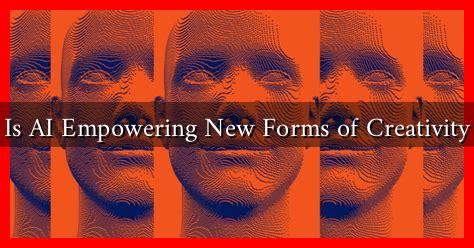-
Table of Contents
Is AI Empowering New Forms of Creativity?
Artificial Intelligence (AI) has rapidly evolved from a niche technology into a transformative force across various sectors, including the arts, music, literature, and design. As AI tools become more sophisticated, they are not only enhancing human creativity but also giving rise to entirely new forms of artistic expression. This article explores how AI is empowering creativity, the implications of this shift, and the future of creative industries in an AI-driven world.
The Intersection of AI and Creativity
AI’s role in creativity can be understood through its ability to analyze vast amounts of data, recognize patterns, and generate content that mimics human creativity. This intersection has led to innovative applications in various creative fields:
- Art: AI algorithms can create stunning visual art pieces, often indistinguishable from those made by human artists. For instance, the AI-generated artwork “Edmond de Belamy” sold for $432,500 at auction, showcasing the potential of AI in the art world.
- Music: AI tools like OpenAI’s MuseNet and Google’s Magenta can compose original music across various genres, allowing musicians to explore new sounds and styles.
- Writing: AI-driven platforms such as GPT-3 can assist writers by generating ideas, drafting content, and even creating poetry, thus expanding the boundaries of literary creativity.
- Design: AI is revolutionizing graphic design through tools like Canva and Adobe Sensei, which offer automated design suggestions and enhancements, making design more accessible to non-professionals.
Case Studies: AI in Action
Several notable projects illustrate how AI is reshaping creative processes:
- DeepArt: This platform uses neural networks to transform photos into artworks in the style of famous painters. Users can upload their images and choose a style, resulting in unique pieces that blend personal photography with classic art.
- AIVA (Artificial Intelligence Virtual Artist): AIVA composes original music for films, video games, and commercials. It has been recognized for its ability to create emotionally resonant compositions, demonstrating that AI can contribute meaningfully to the music industry.
- Runway ML: This tool allows creators to use machine learning models for video editing and visual effects, enabling filmmakers to experiment with new techniques and streamline their workflows.
The Benefits of AI in Creative Fields
AI’s integration into creative processes offers several advantages:
- Enhanced Efficiency: AI can automate repetitive tasks, allowing artists and creators to focus on higher-level creative thinking.
- New Creative Possibilities: AI can generate ideas and concepts that may not have been considered by human creators, pushing the boundaries of traditional art forms.
- Collaboration: AI acts as a collaborator, providing feedback and suggestions that can inspire human creators to explore new directions.
Challenges and Ethical Considerations
Despite the benefits, the rise of AI in creative fields raises important questions:
- Authorship: Who owns the rights to AI-generated content? This question is increasingly relevant as AI becomes more involved in the creative process.
- Quality vs. Quantity: While AI can produce content at scale, there is concern that it may lead to a dilution of quality in creative works.
- Job Displacement: As AI tools become more capable, there is a fear that they may replace human jobs in creative industries, leading to economic and social implications.
The Future of Creativity in an AI-Driven World
The future of creativity in an AI-driven world is likely to be characterized by collaboration rather than competition. As AI continues to evolve, it will serve as a tool that enhances human creativity rather than replacing it. Artists, musicians, and writers will increasingly leverage AI to push their creative boundaries and explore new forms of expression.
In conclusion, AI is indeed empowering new forms of creativity across various domains. By automating mundane tasks, generating innovative ideas, and serving as a collaborative partner, AI is reshaping the creative landscape. However, as we embrace these advancements, it is crucial to address the ethical considerations and challenges that accompany them. The future of creativity lies in a harmonious relationship between human ingenuity and artificial intelligence, paving the way for a new era of artistic expression.
For further reading on the impact of AI on creativity, you can explore resources from Forbes and Wired.

